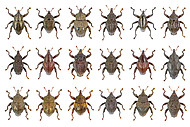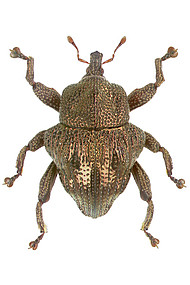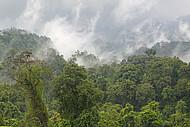Ninety-eight new beetle species discovered in Indonesia
The tropical islands of Java, Bali and Lombok are popular tourist destinations, but remnants of their original rain forests still harbor a largely unexplored insect fauna. Dr. Alexander Riedel and his Indonesian colleagues went to the woods and searched the leaf litter for a group of beetles, the weevil genus Trigonopterus. Only one out of 99 species was in their museum collections before. The other 98 had never been seen by a human eye before.
In this case it was surprising that even areas in Bali and Lombok regularly visited by package tours can be the home of unknown species. Many of these species are restricted to small areas; sometimes they are found only in a single locality. These beetle species are wingless and usually stay for millions of years where they are. This makes them extremely vulnerable to changes of their habitat.
Java, Bali and Lombok are densely populated, so natural forests are easily converted to agriculture if the public is unaware of their value. The researchers chose a cutting-edge approach to rapidly describe the many new species and to beat the high rates of extinction. A portion of each weevil species’ DNA was sequenced, which helped to sort out and diagnose species efficiently. Besides, high-resolution photographs of each weevil were taken and uploaded to the Species ID website, along with a short scientific description. Ninety-eight new species were brought to the light of science and public attention this way right now.
It was also a challenge to find suitable names for so many new species. Some could be based on their respective localities; others were named by the Indonesian numbers one to twelve; however, the easiest choice was to name one for Sir David Attenborough (i.e. Trigonopterus attenboroughi) in recognition of his outstanding documentaries on natural history.
It can be hoped that the documentation of nature´s beauty finally leads to an effective protection of this heritage.









